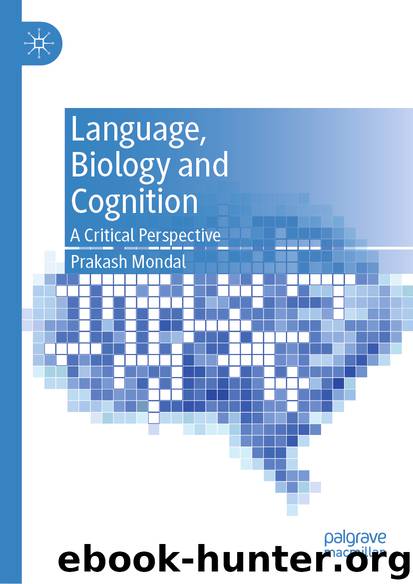Language, Biology and Cognition by Prakash Mondal

Author:Prakash Mondal
Language: eng
Format: epub
ISBN: 9783030237158
Publisher: Springer International Publishing
3.2 Cognition from Language
If the linguistic reflection of mental structures and patterns of our cognitive organization suffices to elevate cognition to a higher level such that language can be viewed as an extension of cognition, linguistic structures in themselves also suffice to lend a very unique character to cognitive processes and mental structures, so much so that cognitive processes and the corresponding mental structures cease to possess the shape they do without language. This issue takes on a completely different character as one takes into consideration the position of Whorf (1956) who adopted the position that it is a specific language that determines a specific way of thinking—a thesis which is known as the linguistic relativity hypothesis or the Sapir-Whorf Hypothesis (named after the linguists Benjamin Lee Whorf and Edward Sapir). Whorf came to this conclusion after examining and studying the Hopi language and, in particular, the Eskimo language in which different words for different types and shades of snow are found (but see for a different view, Pullum 1991). This motivated him to hypothesize that specific languages humans speak determine the structure of human thoughts as well as the reality our thinking and behavior assume. Here, it must be noted that the original emphasis has been on the linguistic determination of the content or interpretative categories of thought rather than of processes or cognitive mechanisms of thought (see Lucy 1992). There is independent evidence that this thesis can be at least weakly supported. For example, Kay and Kempton (1984) have shown that color perception and categorization, especially the perception of focal colors, can be shaped by the color terms extant in languages, although Berlin and Kay (1969) much earlier attempted to establish that the universal cognitive mechanisms of color perception determine the character of (focal) color terms across languages organized in terms of levels since all languages have the same underlying structure of basic color terms. Taken to its extreme, this hypothesis may imply that there would be as many language-respective cognitive patterns as there are languages in the world. That is, around 7000 languages on this planet will give rise to 7000 different interpretative structures of conceptualizing the world. This is not merely absurd but also cognitively opaque. There cannot be any cognitively constrained profiles that can envelop or encompass as many biologically plausible cognitive patterns as there are, had been, and would be languages in the world. It is not clear how one can even include languages that have once existed but are now extinct because the specific cognitive patterns these by-now-extinct languages had instantiated long ago are to be believed to be eliminated. Simply speaking, even if biological variation need not and often does not certainly catch up with this scale of cognitive diversity and variation which appears to be more or less opaque to, or at least not tamed by, the operative biological processes, there would not exist enough cognitive constraints that can filter out possible cognitive profiles or patterns that parallel all natural languages that have existed, presently exist and will emerge in the future.
Download
This site does not store any files on its server. We only index and link to content provided by other sites. Please contact the content providers to delete copyright contents if any and email us, we'll remove relevant links or contents immediately.
Rewire Your Anxious Brain by Catherine M. Pittman(18553)
Talking to Strangers by Malcolm Gladwell(13222)
The Art of Thinking Clearly by Rolf Dobelli(10221)
Mindhunter: Inside the FBI's Elite Serial Crime Unit by John E. Douglas & Mark Olshaker(9201)
Becoming Supernatural by Dr. Joe Dispenza(8119)
Change Your Questions, Change Your Life by Marilee Adams(7635)
Nudge - Improving Decisions about Health, Wealth, and Happiness by Thaler Sunstein(7615)
The Road Less Traveled by M. Scott Peck(7522)
The Lost Art of Listening by Michael P. Nichols(7406)
Enlightenment Now: The Case for Reason, Science, Humanism, and Progress by Steven Pinker(7235)
Mastermind: How to Think Like Sherlock Holmes by Maria Konnikova(7227)
Win Bigly by Scott Adams(7094)
The Way of Zen by Alan W. Watts(6506)
Daring Greatly by Brene Brown(6445)
Big Magic: Creative Living Beyond Fear by Elizabeth Gilbert(5612)
Grit by Angela Duckworth(5523)
Ego Is the Enemy by Ryan Holiday(5294)
Men In Love by Nancy Friday(5155)
Altered Sensations by David Pantalony(5045)
